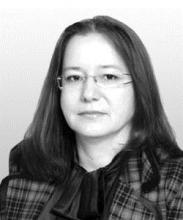User Interface Design Patterns
Overview
Contents
- Introduction
- User behavior when working with interactive systems, patterns to describe user behavior
- Information architecture
- Interaction patterns
- Content organization in interactive systems
- Organizational schemes
- Structure organization
- Patterns for organizing and displaying data
- Navigation
- Problems and principles for good navigation
- Patterns in interactive systems
- Screen organization
- Basic concepts
- Techniques for grouping and arranging elements
- Patterns for organizing screens
- Forms and data entry
- Principles for designing forms
- Types of input data and controls
- Patterns for designing forms (relationships between elements, values of elements …)
- Actions and commands
- Representation and rendering of actions
- Commands patterns
- Interaction with data lists
- Interaction in social media
- Interaction in mobile devices, features of the interaction in mobile devices, interaction patterns.
Testimonials
- Course materials in English
- 2 Lectures each week á 2-3h
- 7 Assignments á 3-5h
- 2 Exams á practical (2h programming) and theoretical (20min exam) parts
"The used course materials were in English, except for a few of the example test we got, but that didn’t impose huge difficulties while learning.
During the first weeks, we had several lectures on differing weekdays.
Afterwards we had lectures on every Monday at 10 a.m. and every Friday at 2 p.m., for about 2-3 hours each, regularly, except for few occasions.
Regular lectures started from mid of October and were finished at the end of December.
After the regular, theoretical lectures, we had practical programming lectures every Friday until the end of the course.
Some of the lectures took place during Austrian holidays (Christmas).
We had around 7 assignments during December and January.
Each of them took several hours to complete.
The assignments were extensive, but perfectly feasible.
The basic principle was usually the same, requiring us to find the best design pattern for a given user interface.
Additionally, there were two bigger exams.
The first exam was on the 5th of December and the second exam on the 22nd of January.
Each exam consisted of a practical part for around two hours and a theoretical part for twenty minutes."
Outcomes
Upon completion of the course, the student is expected to
- demonstrate knowledge about the basic principles of effective and efficient user interaction
- apply the basic principles when designing a user interface
- develop an interactive application following the learned principles
Methods & Schedule
Lectures will be online presentations in hybrid mode (on-campus lecture + webinar room), lab exercises (assignments), teamwork, case studies, invited guest lecturers, self-study.
The lectures will be held weekly with several groups (dates) offered, generally during the day.
Additionally, there will be some recordings of the lectures for watching at a later time.
| Type | Effort [h] |
|---|
| Lectures | 30 |
| Lab Exercises (Assignments) | 40 |
| Colloquiums | 50 |
| Self-Study | 30 |
Materials
| Author | Title | Publisher | Year |
|---|
| Jenifer Tidwell | Designing Interfaces, (2nd edition) | O’Reilly Media | 2010 |
| Bill Scott, Theresa Neil | Designing Web: Interfaces, Principles and Patterns for Rich Interactions | O’Reilly Media | 2009 |
| Jesse James Garrett | The Elements of User Experience: User-Centered Design for the Web and Beyond (2nd Edition) | New Riders | 2010 |
Assessment
The assessment consists of several elements like lab exercises (assignments), quizzes (related to the online lectures) and 2 colloquiums. If a student does not collect enough points he/she will have to do an additional practical exam.
Students of StudyATHome Internationally are advised to do both colloquiums for being able to finish the course within the semester (end of January).
Methods
| Type | Points |
|---|
| Lab exercises (Assignments) | 5 points |
| Quizzes | 15 points |
| Colloquium 1 | 40 points |
| Colloquium 2 | 40 points |
Minimum Requirements
The course is passed if at least 50% of the points are collected from all assessments, no matter how many points are collected from each of them.
Lab exercises (Assignments)
The students will have to do 5-7 lab exercises (assignments) that have to be solved at home and uploaded until a given deadline.
We count all timely uploaded solutions. To obtain points, each student has to take an exam that is related to the uploaded solutions. The student has to prove that he/she understands the solution and must be able to explain it. The exam can only be taken once during the January examination period.
The total number of points is calculated by scaling the number of points earned on the exam with the number of timely uploaded solutions. The maximum number of points is won only if all lab exercises are uploaded on time. If the student does not take the lab exam, he will obtain 0 points of the same.
Colloquiums (1 & 2)
Colloquiums consist of a practical problem. You need to solve the problem by programming (100% of points) or by drawing the screen layout (not all points).
No minimum points for passing the colloquium are defined (You can participate in the second colloquium even if you obtain zero points on the first colloquium).
Quizzes
The quizzes are short tests related to details of the lectures.
Quizzes are taken on Moodle along with colloquiums (two separate quizzes with the first and second colloquium) or the practical exam (single quiz together with the practical exam in examination period).
Practical Exam
The practical exam is mandatory only, if the student failed to collect at least 50% of the points of the colloquia.
You need to solve the problem by programming (100% of points) or by drawing the screen layout (not all points).
Criteria
| Grade | Grade (letter) | Scale |
|---|
| 5 | F | up to 50 points |
| 6 | E | 51 to 60 points |
| 7 | D | 61 to 70 points |
| 8 | C | 71 to 80 points |
| 9 | B | 81 to 90 points |
| 10 | A | 91 to 100 points |
Requirements
Skills
Basic programming skills
Equipment
Computer




